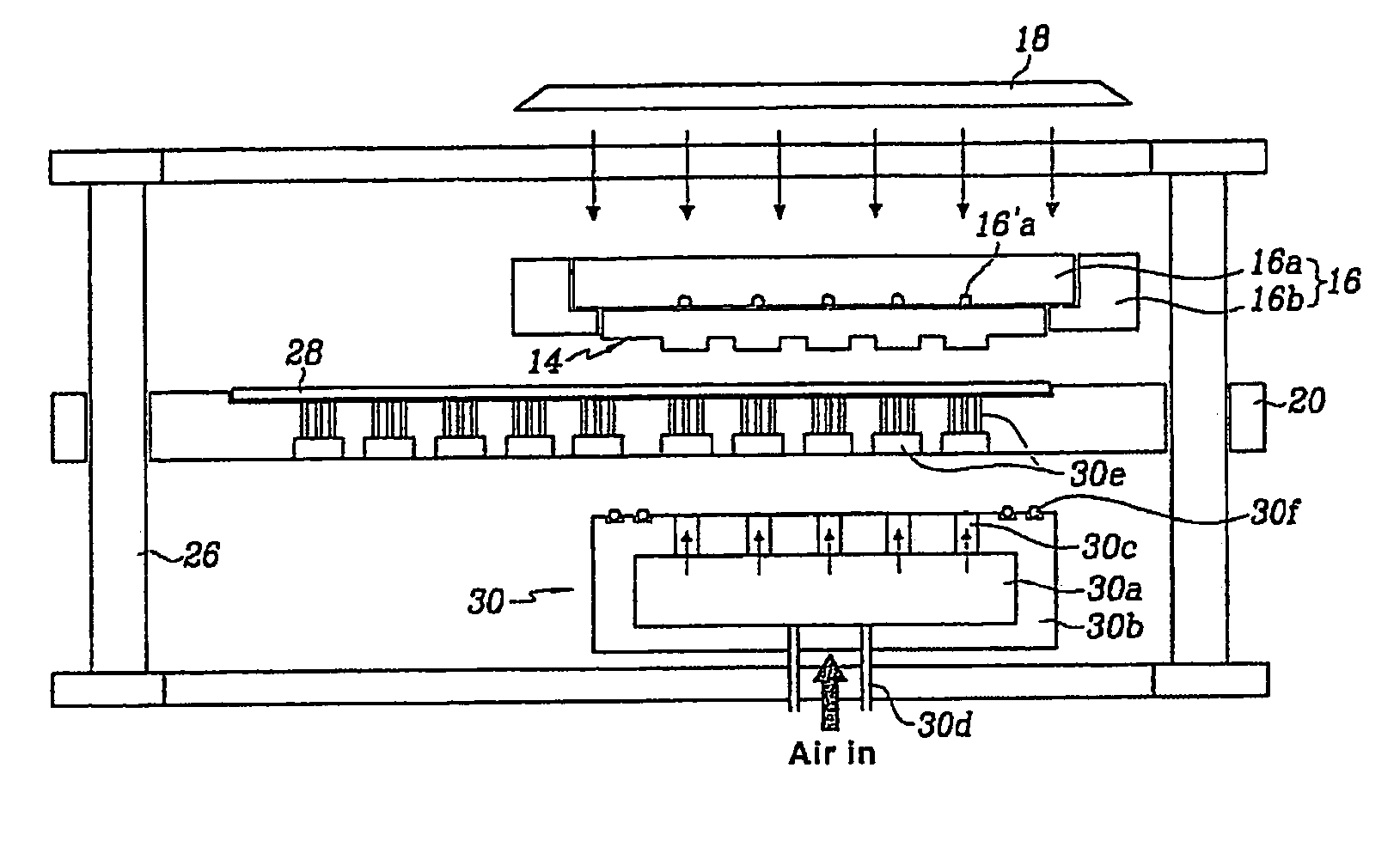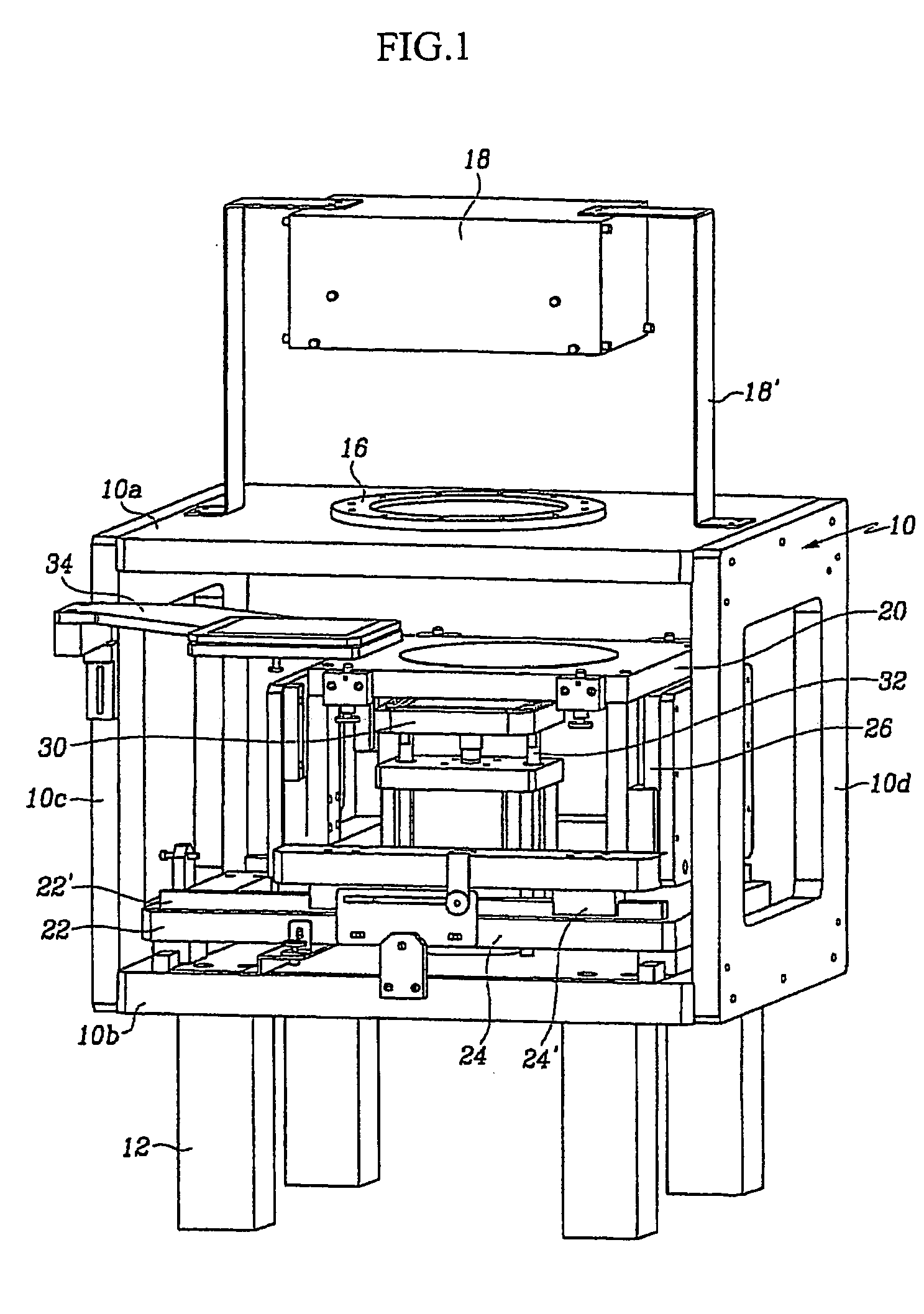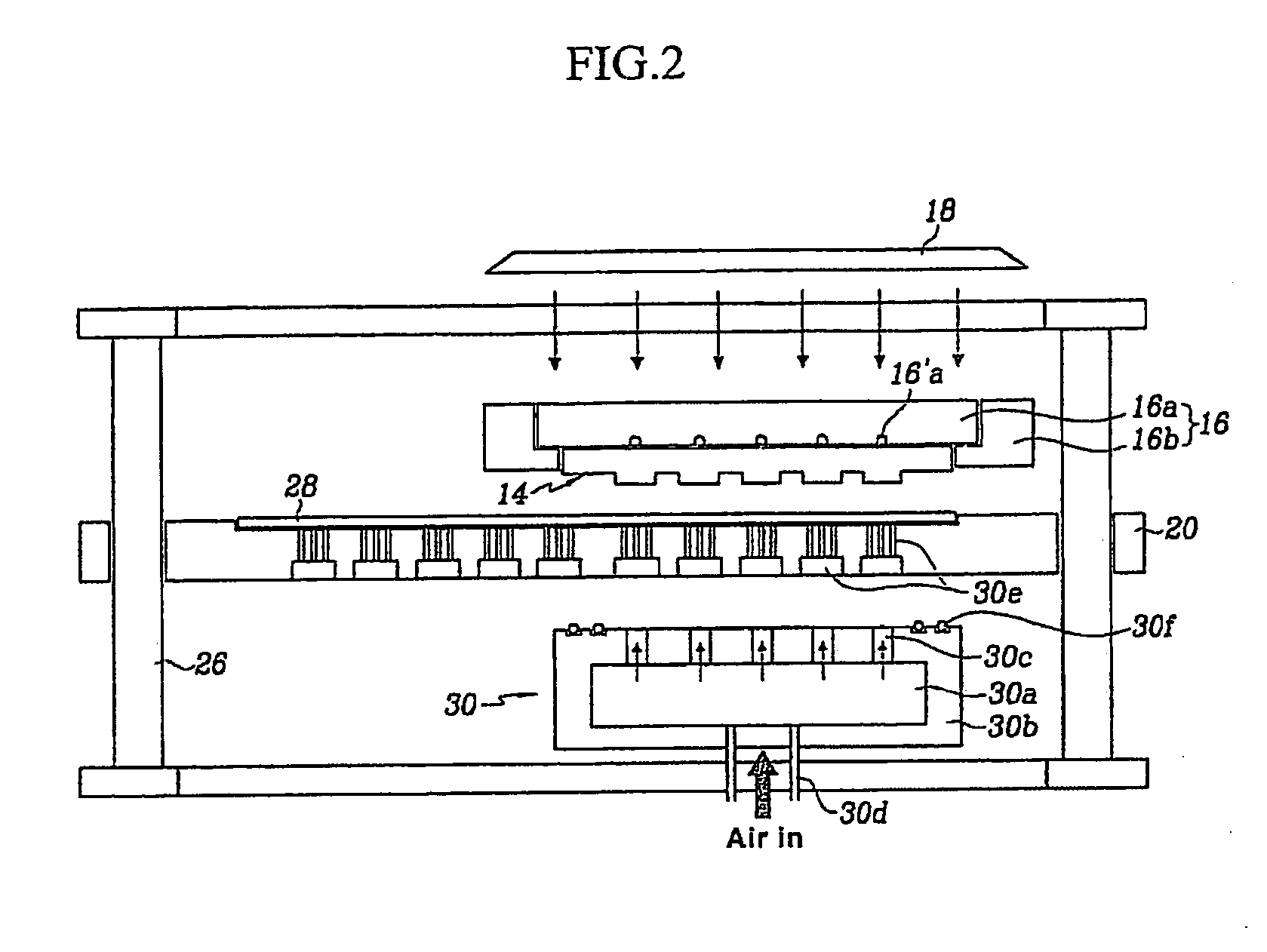UV nanoimprint lithography process and apparatus
a lithography and nano-imprint technology, applied in the field of uv nano-imprint lithography process and its apparatus, can solve the problems of high pressure (about 30 atmospheric pressure) required to imprint high-viscosity resists, breakage or damage previously fabricated nanostructures, and opaque stamps used in these processes are also an obstacle to multi-layer alignment, so as to achieve efficient forming of high-precision, high-quality nanostructures
- Summary
- Abstract
- Description
- Claims
- Application Information
AI Technical Summary
Benefits of technology
Problems solved by technology
Method used
Image
Examples
Embodiment Construction
[0038] Now, embodiments of the present invention will be described with reference to the attached drawings.
[0039]FIG. 1 is a schematic perspective view showing a UV nanoimprint lithography apparatus according to an embodiment of the present invention, and FIG. 2 is a side view for the UV nanoimprint lithography apparatus of FIG. 1.
[0040]FIG. 1 depicts the apparatus including a base 10 having upper and lower frames 10a and 10b and left and right frames 10c and 10d. The base 10 is supported by four supporting corners 12 arranged on the lower plate 10b.
[0041] As shown in FIG. 2, a stamp chuck 16 mounting an element-wise patterned stamp 14 is fixedly arranged on the upper frame 10a. The stamp chuck 16 is made of a UV-transparent material and includes a back plate 16a for vacuum absorption of the element-wise patterned stamp 14 and the main body 16b mounting the back plate 16a, as shown in FIG. 2.
[0042] Although not shown in detail, the back plate 16a includes a vacuum line 16′a for ...
PUM
| Property | Measurement | Unit |
|---|---|---|
| Pressure | aaaaa | aaaaa |
| Height | aaaaa | aaaaa |
| Transparency | aaaaa | aaaaa |
Abstract
Description
Claims
Application Information
 Login to View More
Login to View More - R&D
- Intellectual Property
- Life Sciences
- Materials
- Tech Scout
- Unparalleled Data Quality
- Higher Quality Content
- 60% Fewer Hallucinations
Browse by: Latest US Patents, China's latest patents, Technical Efficacy Thesaurus, Application Domain, Technology Topic, Popular Technical Reports.
© 2025 PatSnap. All rights reserved.Legal|Privacy policy|Modern Slavery Act Transparency Statement|Sitemap|About US| Contact US: help@patsnap.com



